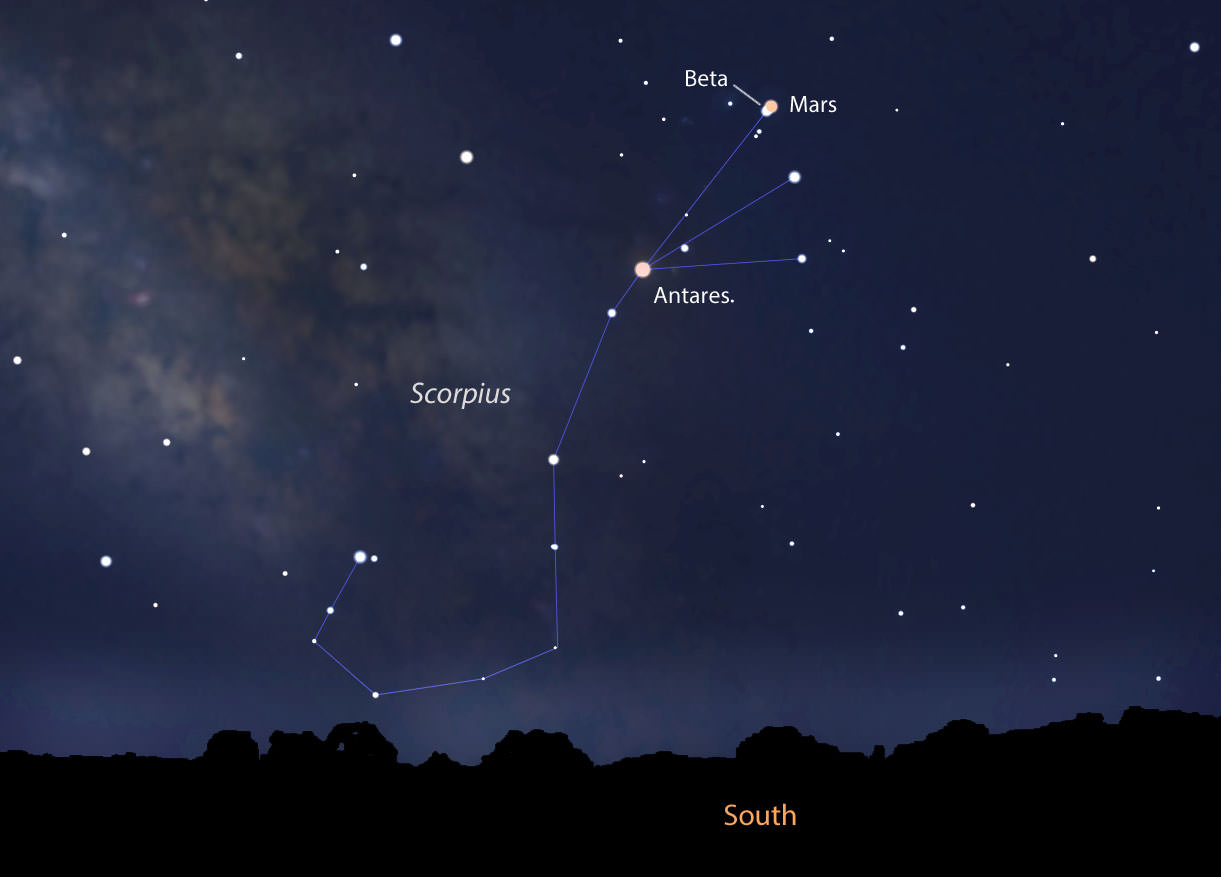[caption id="attachment_127850" align="aligncenter" width="900"]
Face south tomorrow morning at the start of dawn and you might have to look twice for Beta Scorpii. Bright Mars stands right next to the star and will pass very close to the star on Wednesday morning, March 16. Diagram: Bob King, source: Stellarium[/caption]
Planets can sneak up on you. Especially the ones that don't rise till you're in bed. Take
for instance. It's been ambling east along the morning zodiac all winter long; today it enters Scorpius, rising around 1:30 a.m. Not two days later, the planet will have a spectacularly close conjunction with
, the topmost star in the scorpion's head.
[caption id="attachment_127852" align="aligncenter" width="1022"]
This close up of the head of Scorpius shows Mars' progress over the next three mornings. Positions are shown for 5:30 a.m. CDT. Diagram: Bob King, source: Stellarium[/caption]
Also known as
, Beta shines at magnitude +2.6 next to the fiery, zero-magnitude Mars. With their striking color contrast, the two would make a superb ring setting: a tiny diamond nestled next to a plump garnet. They'll be together for several mornings, their separation changing each day: 15 arc minutes on Tuesday (1/2 the diameter of the Full Moon); 9 arc minutes when closest on Wednesday and back out to 23 minutes on Thursday.
[caption id="attachment_127863" align="aligncenter" width="900"]
In a telescope, diminutive Mars pairs up with gorgeous Graffias. North is up and left. Beta-1, the brighter of the two, has an additional 1oth magnitude companion half an arc-second away, while Beta-2 is also double with a faint companion 1/10th of arc second distant. That's not all. Beta-1 is an exceedingly close binary -- making Graffias at least a five-star system! Diagram: Bob King , source: Stellarium[/caption]
It's a gas to see two celestial objects approach so closely, but this conjunction offers a rare treat. Did you know that Beta is one of the finest double stars in the sky? It has a fifth magnitude companion 14 arc seconds northeast of the primary. Any telescope will split this jewel
and
show Mars in the same field of view at both high and low magnifications. That's just so cool — I sure hope you'll get to see them.
[caption id="attachment_127851" align="alignright" width="580"]
Mars, in gibbous phase, is still small but its larger surface features are now visible in modest-sized telescopes. This photo, taken on March 13th, shows Mare Acidalium in the planet's northern hemisphere (top) and a hint of the north polar cap. Sinus Aurorae and Mare Erythraeum dominate the south. Click for a Mars map. Credit: Anthony Wesley[/caption]
Mars now measures 10 arc seconds in diameter, small for sure, but big enough to see the larger dark markings and a hint of the north polar cap. The planet is heading for opposition on May 22nd, when it will shine at magnitude -2.0 (brighter than Sirius) with a disk 18.4 arc seconds across, its biggest and
.
Let this week's lovely conjunction serve as a warm-up to the forthcoming season of Mars.
 Universe Today
Universe Today
